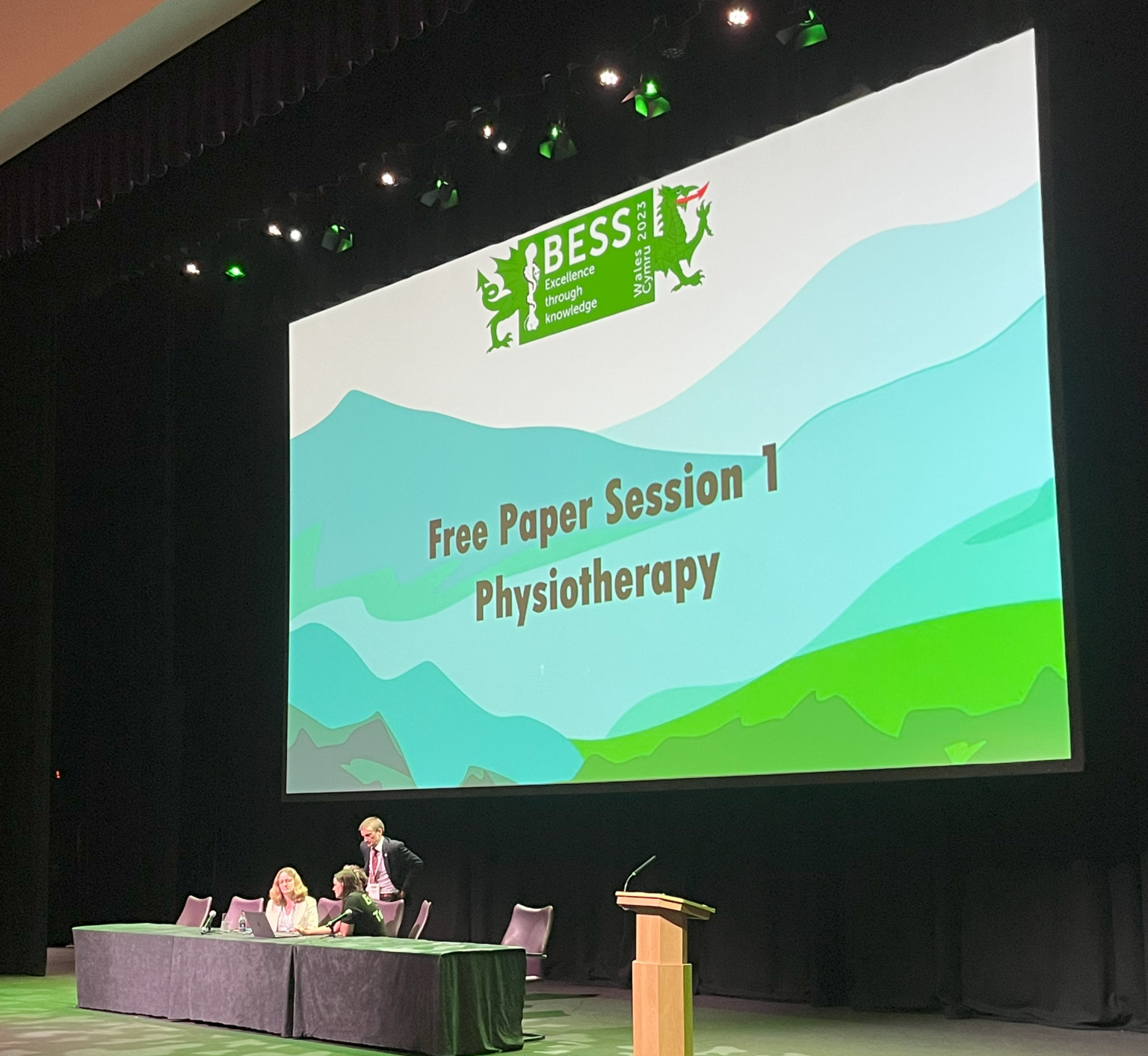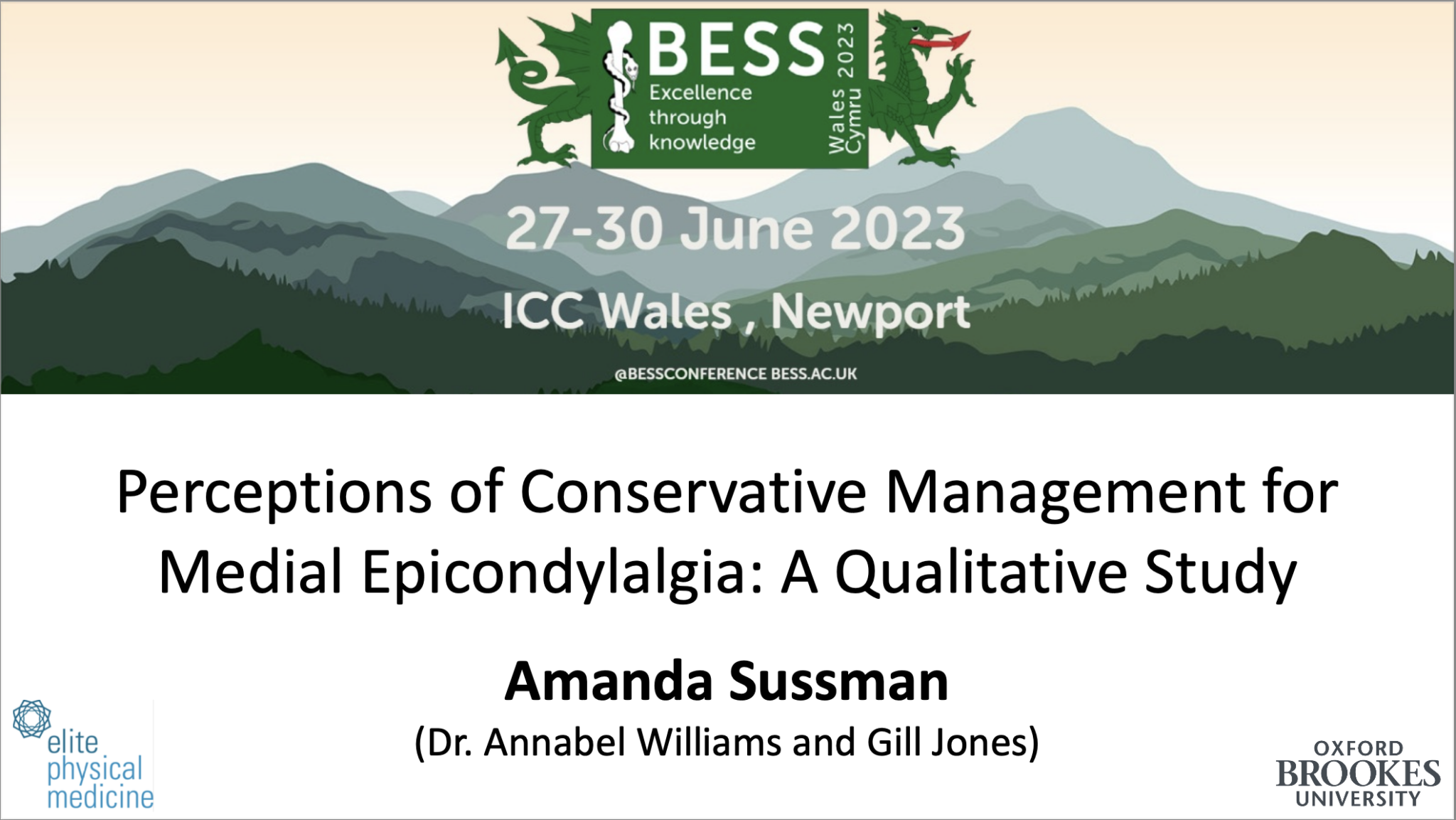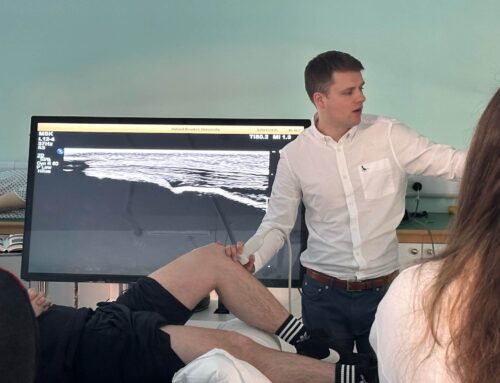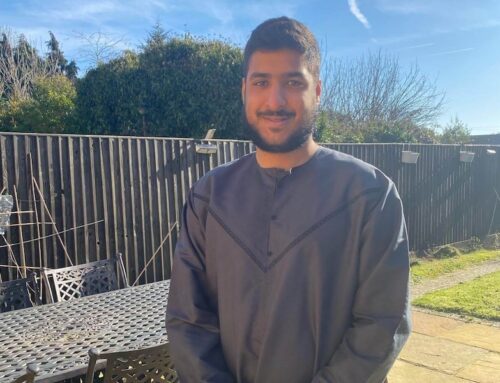Amanda Sussman was invited to present her Masters Research at a British Elbow and Shoulder Society conference.
Amanda studied MSc Physiotherapy at Oxford Brookes University and graduated with distinction.

As part of her dissertation, she undertook a research project into Medial Epicondylalgia (otherwise known as Golfer’s Elbow) and was recently given the opportunity to share her findings at a conference in June 2023.
The purpose of Amanda’s research project was to explore current physiotherapy management of medial epicondylalgia in adults. She analysed data from a focus group and identified four major themes:
(1) tendon pathology understanding
(2) case complexity leading to a need for specialised management
(3) ‘patient-centric’: return to activity/work, and
(4) influencers on evidence-based practice.
Earlier this year, as part of her continued professional development at Elite, Amanda took a day off from treating patients and travelled to Wolfson College at Oxford University, where she attended the Physiotherapy Update Roadshow Talk by the British Shoulder and Elbow Society (BESS).
But she didn’t stay sat in the audience…!
Amanda’s supervisors encouraged her to attend the roadshow in preparation for the Annual Scientific Meeting for which she was chosen to speak in one of the ‘free paper’ sessions at the 2023 Annual Scientific Meeting in Newport, Wales.

The abstract of her paper, ‘Perceptions of Conservative Management for Medial Epicondylalgia: A Qualitative Study of Physiotherapy Best Practice’ has been published and is available to download from the BESS website.

The talk was organised and provided by Professor Steve Gwilym (a Shoulder Consultant at Oxford University Hospital ) and attended by other physiotherapists and members of BESS.
Elite’s Clinical Director, Andy McCrea, said:
“It’s great that Amanda was able to listen and learn from experienced professionals covering a range of upper limb issues, including rotator cuff tears, frozen shoulder, shoulder instability and arthritis of the shoulder.
The team are all very committed to sharing their knowledge and I’m pleased to be able to support Amanda as she prepares to present at the CSP Annual Conference in November.”
What’s the difference between golfer’s elbow and tennis elbow?
Tennis and golfer’s elbow are common tendon injuries which even famous athletes like Tiger Woods and Serena Williams have experienced. Whilst the pain can be severe enough that the pros have to pull out of major tournaments, with the right treatment, rest and programme of strength training, players at all levels can get back to their game.
Both injuries cause elbow pain along the forearm, but there are a few differences.
Medial epicondylitis (golfer’s elbow) : pain from the elbow to the wrist on the inside of the elbow. The pain is the result of damage to the tendons that bend the wrist toward the palm. It is usually caused by the excessive force used to bend the wrist toward the palm, like swinging a golf club.
Lateral epicondylitis (tennis elbow) : pain on the outside of the elbow. The pain is caused by damage to the tendons that bend the wrist backward away from the palm. It is usually caused by the force of the tennis racket hitting balls in the backhand position.
Amanda explained why she chose this research topic:
“When I worked as a Kinesiologist in Canada, alongside experience physiotherapists, there were questions about the management of medial epicondylalgia on everyone’s mind. Three to four years later and we still don’t have further advancement in research for Golfer’s Elbow. This conference gave me the opportunity to not only share my findings but highlight this significant gap in evidence to a room full of specialists that regularly conduct research.”
If you’re worried that you may have developed with medial or lateral epicondylitis, or would like some advice on how you can prevent this condition, please contact the clinic.



